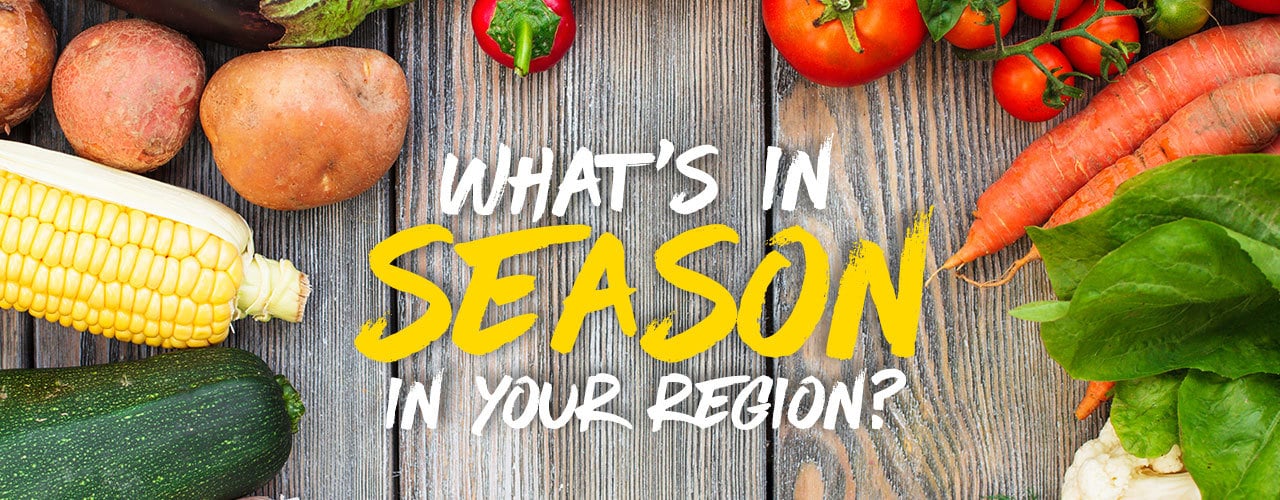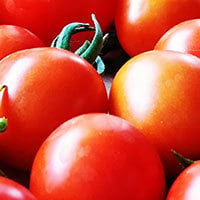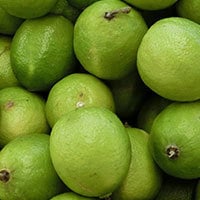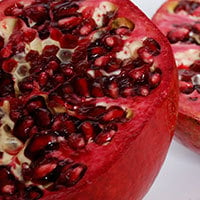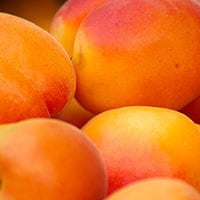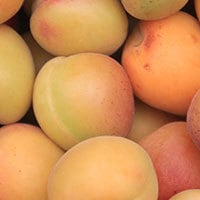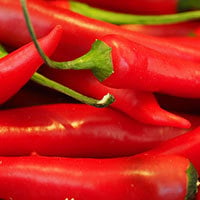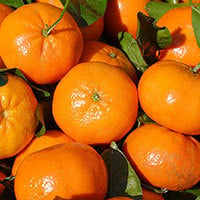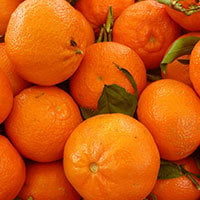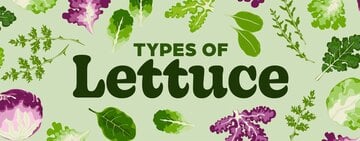Seasonal Fruits and Vegetables in Your Region
Last updated on Nov 5, 2025Nora FulmerIf you've ever asked, "When are pears in season?" or, "What are some examples of fall fruits?", you are not alone. With so many fruits and vegetables being imported from other states and countries, it can be hard to know what fruits are in season around your restaurant. Many consumers will pay more for local and organic fresh vegetables and fruits. You can take advantage of this restaurant trend and boost your profits by familiarizing yourself with your region's seasonal produce cycles.
Skip to our interactive seasonal produce chart to find out what's in season in your region.
Shop All Fruits and VegetablesEating Seasonally
If your establishment doesn’t have a culinary garden, it likely obtains produce from outside sources. Although non-local and out-of-season produce gets the job done, many people prefer the health and environmental benefits that come with eating seasonally, shifting the focus of restaurants towards locally grown, in-season food. Here are a few of the benefits of eating in-season vegetables and fruits.
- Increased Nutrition - On average, seasonal fruits and vegetables contain many more nutrients than their frozen or out-of-season counterparts. The process of preserving and protecting fruits and vegetables for long-term storage can sap produce of their nutritional value, meaning in-season produce will almost always be packed with more nutrients.
- Better Taste - In addition to being more nutritious, in-season fruits and vegetables are often thought of as better tasting than out-of-season produce. Farmers that look to mass-produce fruits and vegetables prioritize shelf-life over taste, allowing the produce to be stored for long periods and survive being shipped across the country. As a result, you’ll often find that locally grown in-season vegetables have more flavor.
- Lower Costs - Thanks to its abundant supply, in-season produce is often much cheaper. Out-of-season produce isn’t as plentiful, resulting in higher prices. Additionally, extra costs need to be added to out-of-season produce to cover aspects such as transportation and preservation, further inflating prices. Eating in-season produce is not only good for your health, but it’s great for your wallet.
- Reduced Carbon Footprint - Consuming in-season vegetables and fruit is a great way to reduce your carbon footprint and have a positive impact on the environment. Out-of-season produce typically requires hundreds of miles of transportation, which results in the burning of many fossil fuels and emissions entering the atmosphere. If you eat local in-season produce, your food doesn’t have to travel as far to reach you, greatly cutting back on emissions.
- Decreased Pesticide Consumption - Out-of-season produce is usually filled with a variety of pesticides and preservatives to maintain freshness and quality throughout the food’s entire journey. Although properly cleaning out-of-season fruits and vegetables can remove some chemicals, there may be some remaining. However, in-season vegetables and fruits don’t require as much preservation through chemicals, meaning eating in-season produce will greatly reduce the number of pesticides you consume.
What Produce Is in Season?
Depending on what time of the year it is and what region of the United States you are located in, different produce will be in season. For example, spring produce in the Northeast consists of foods such as different types of mushrooms, rhubarb, and cherries, while spring produce in the Southwest includes corn, avocados, and apricots. Learning what fruits and vegetables are in season in your region is important if you’re looking to use fresh ingredients and create the best dishes possible.
Produce Calendar
Cooking with local, fresh seasonal vegetables and herbs is delicious, healthy, and easy to do with this convenient guide. We've broken down the contiguous United States into regions, so you can see the fruits and vegetables in season in your part of the country all year round.
As you explore, it’s important to keep in mind that these lists may vary depending on where you live, even within a certain region. Be sure to research your area using information from your local government or food guides to find what vegetables are in season near you.
Fall Vegetables and Fruits in the Northwest
There is no shortage of delicious fall vegetables available in the Northwest, including bulbs like fennel, garlic, leeks, and onions, all of which are perfect for seasoning dishes or making sauces. If your business serves a lot of salads, you'll also love the Northwest's selection of arugula, carrots, cucumbers, kale, lettuce, mushrooms, peppers, salad greens, spinach, and tomatoes.
Fall Vegetables and Fruits in the Midwest
Green, seasonal vegetables are abundant in the Midwest during the autumn months, such as broccoli, celery, cucumbers, kale, lettuce, spinach, and zucchini. There are also plenty of leafy greens available, like broccoli, brussels sprouts, cabbage, and cauliflower. If you're looking for fall fruit, you'll need to import everything you need other than apples and pears.
Fall Vegetables and Fruits in the Northeast
Seasonal vegetables are plentiful in the Northeast during the autumn months, and the region ships these products to businesses around the country. Fall fruit is less common, but you'll still be able to find plenty of apples, cranberries, grapes, and pears to go around. If you're looking for other seasonal fruits, consider buying from distributors in the South and Southwest regions.
Fall Vegetables and Fruits in the Southwest
The Southwest is full of delicious crops during the autumn months, including avocados, dates, figs, limes, and pomegranates. You'll also find a host of fall root vegetables, such as carrots, leeks, parsnips, potatoes, radishes, sweet potatoes, and turnips. If your restaurant or grocery store is located in the Southwest, you won't need to import much, which will help your budget and keep your inventory stocked.
Fall Vegetables and Fruits in the South
Some of the South's signature crops are still going strong in autumn, including collards, okra, and sweet potatoes. You'll also find gourds like pumpkins and squash, along with kale, lettuce, and spinach for salads and side dishes. If your business bakes pies, you'll have plenty of apples and peaches to choose from.
Spring Vegetables and Fruits in the Northwest
Spring in the Northwest is similar to the Midwest: it's all about root vegetables. From carrots and fennel to potatoes and radishes, you'll be able to prepare these spring vegetables in a variety of styles while also creating delicious purees. The region also offers plenty of cruciferous greens like cabbage and chard, but you'll need to import most of your spring fruit.
Spring Vegetables and Fruits in the Midwest
While there isn't an overabundance of spring fruit available in the Midwest, you'll have no trouble finding plenty of fresh seasonal vegetables to add to your favorite dishes. Some of the Midwest's signature spring root vegetables are plentiful, including beets, carrots, parsnips, and radishes. Because fresh spring fruit isn't readily available, you'll need to import those items from other areas.
Spring Vegetables and Fruits in the Northeast
Spring is a bountiful and beautiful time in the Northeast region of the country. You'll find plenty of spring root vegetables in season (like carrots, beets, parsnips, and radishes), but leafy greens like chard, spinach, and arugula are also prevalent. If you're looking for seasonal citrus fruits such as grapefruit, oranges, or lemons for your drinks or desserts, you'll need to import them from the South or Southwest regions.
Spring Vegetables and Fruits in the Southwest
If your guests are craving guacamole, you'll love the Southwest's abundance of avocados. There are also plenty of leafy greens close at hand for salads and sides, including chard, kale, lettuce, and spinach. Additionally, you'll find fruits and vegetables in season that aren’t as common in the rest of the country, such as figs and squash.
Spring Vegetables and Fruits in the South
When it comes to spring in the South, you'll find plenty of seasonal green vegetables to go around, such as lettuce and spinach. Traditional Southern favorites are also plentiful, including collards, okra, and sweet potatoes. The South is also a great source of spring citrus fruit, particularly grapefruit and oranges.
Summer Vegetables and Fruits in the Northwest
Summer in the Northwest supplies a cornucopia of delicious seasonal fruits and summer vegetables, including unique varieties like artichokes, chilies, and garlic. The area is also known for seasonal root vegetables, such as beets, carrots, fennel, leeks, onions, parsnips, potatoes, and turnips. If your business is located in this area, you won’t need to import much during the summer, which will help your bottom line.
Summer Vegetables and Fruits in the Midwest
Predictably enough, corn is one of the Midwest's bumper crops over the summer months. You'll also find plenty of grapes to use at your winery or sell at your farmer's market. Additionally, there is an abundance of cucumbers, eggplant, squash, and zucchini to incorporate into all of your favorite appetizers, salads, and entrees.
Summer Vegetables and Fruits in the Northeast
Summer in the Northeast is bursting with almost every seasonal fruit and vegetable imaginable. If your restaurant or bakery sells pie, you’ll love having apples, blueberries, cherries, peaches, rhubarb, and strawberries close at hand. You'll also find a host of other perennial produce favorites, including brussel sprouts, eggplant, pumpkins, and watermelon.
Summer Vegetables and Fruits in the Southwest
Summer in the Southwest is all about summer fruit, including apples, blueberries, grapes, nectarines, peaches, pears, plums, raspberries, and watermelon. Pomegranates are also plentiful in the region during the summer months. These states are perhaps best known for their chilies, which come in a variety of types and are perfect for use in any spicy dish.
Summer Vegetables and Fruits in the South
The South is jam-packed with vegetables in season during the summer months, including asparagus, cabbage, cauliflower, green beans, peas, and tomatoes. Your guests will also love the delicious seasonal fruits available in the South over the summer, such as peaches and plums.
Winter Vegetables and Fruits in the Northwest
The Northwest is one of the best places to procure winter root vegetables, as they have plenty of beets, carrots, fennel, leeks, parsnips, potatoes, and turnips to go around. The region also has clementines, a unique winter citrus fruit that is a popular item in grocery stores nationwide.
Winter Vegetables and Fruits in the Midwest
Like the Northeast, there aren't many winter fruits and seasonal vegetables to choose from during the cold months in the Midwest. You'll need to import everything other than mushrooms, which are always bountiful.
Winter Vegetables and Fruits in the Northeast
The Northeast doesn't have much to offer over the winter months due to snow and cold temperatures, so you'll need to import all of your winter fruits and vegetables other than mushrooms and parsnips.
Winter Vegetables and Fruits in the Southwest
If your business needs citrus over the winter months, the Southwest is your best bet. Boasting everything from grapefruit and lemons to oranges and tangerines, this region also produces delicious strawberries. Additionally, you'll find plenty of avocados for your Mexican restaurant and broccoli, carrots, and cauliflower for vegetable medleys.
Winter Vegetables and Fruits in the South
Citrus is abundant in the South during the winter, with grapefruit and oranges leading the way. You'll also find a variety of leafy greens, including collards, kale, lettuce, and spinach. Apples are plentiful, too, which is good news for restaurants and bakeries.
